First published on March 28, 2016 • Last updated on September 11, 2020
This page may contain affiliate links; if you purchase through them,
we may receive a small commission at no extra cost to you.
Chicha is basically a fermented beverage, not unlike beer or cider. It is found throughout the Andean nations of Argentina, Chile, Bolivia, Peru, Ecuador, and Colombia and can be found in other Latin American countries. Most forms of chicha derive from corn and other grains but, as you will see below, the name chicha can refer to a drink made from fruit or from yuca. Drinking chicha freaks many people out. They’ve likely heard of the spit and chew method of fermentation that is commonly used in the Andes of Peru. In fact, that was our first introduction to chicha and it made me wonder exactly how safe it was to drink. According to Sander Katz, using saliva to convert starch to sugar is a common method to start fermentation:
Perhaps you have noticed that if you chew long enough on a morsel of starchy food it starts to taste sweet. Digestion begins in the mouth, and your body wastes no time breaking down food into simpler nutrients. Chewing on grains and spitting them out is a low-tech and ancient means of starch conversion for beer making. (Wild Fermentation, page 142)
This is probably an immediate turn off for many of you. But don’t worry. There are other ways to make fermented chicha.
Chica de Yuca
The first chicha we were introduced to here in Ecuador was in the Oriente, in the Napo province near Tena. The indigenous Quichua make chicha de yuca. On a tour that we took through the Casa del Suizo, we were able to watch the process of chicha making and to taste the final product. Rather than chew anything, the local recipe called for mashing yuca and for grating sweet potato. Both are starchy root vegetables and the mashing and grating must help break down the starch so that it can more readily convert into sugar. All of us gave it a try. Our guide, Jose, passed around a big communal bowl and most of us took a sip… about twenty people or so. The liquid in the bowl was slightly thick, off-white in color, and had the tangy taste of something gone a little off, like a very ripe cheese but without an overwhelming aroma. It was strange but not horrible. Nevertheless, we left a lot in the bowl and Jose was thrilled to polish off the rest! If you would like to make your own chicha de yuca, here is a recipe translated and from Spanish to English and adapted for clearer instructions; the original can be found in the text on the video on this YouTube Channel.
Recipe for Chicha de Yuca
Ingredients
- 2 medium sized yuca
- 1 sweet potato
- water
Preparation
- Peel the yuca and cut into chunks.
- Place the yuca in a large pot, cover with water, and boil until it is soft. Drain but save the water.
- Mash the yuca in a wooden bowl.
- Grate the sweet potato into the saved water.
- Add the mashed yuca to the sweet potato and water.
- Place in a ceramic container to ferment.
- Allow to ferment for at least 24 hours and up to five days.
The word in English is yuca (not yucca which is a plant related to aloe) and in Spanish yuca.
Chicha de Jora
While chicha de yuca is commonly known in the Oriente of Ecuador, it is rarely seen in the Sierra. There, the chicha of choice is chicha de jora, which is made from corn. In fact, jora is actually sprouted corn, something we don’t often see in the United States. However, we commonly sprout grains to make beer and the resulting product is called malt.
I have tried chicha de jora many times. It is the traditional drink served with grilled or roasted cuy and it is offered at most indigenous Quichua festivals in small towns. At a late Kapak Raymi festival held by Saraguros living near Quito, Ecuador, we watched a shaman use chicha de jora to bless the festivities and the year to come. He drank from a clear glass so that we could see the pale golden color of the chicha. He took a large sip without swallowing and then sprayed the chicha into the air. Finally, he poured some of the chicha onto the ground.
Just last week, we were offered chicha de jora at the Mushak Nina festival in Cochasquí. It was a mild ferment only a day or two old. It was slightly fizzy and a pale, cloudy yellowish color. It did not taste very sweet but that is likely because most of the sugars in the recipe had been converted to alcohol. It was reminiscent of homemade beer with heavy carbonation.
Recipe for Chicha de Jora
The most basic recipe for Chicha de Jora can be found in Spanish at Receta Ecuatoriana Here it goes in English:
Ingredients
- 10 liters of water
- 1.5 kilograms of sprouted corn
- 1 kilo of barley
- 1 teaspoon of whole cloves
- sugar to taste
PREPARATION
- Toast the sprouted corn and barley for 20 to 25 minutes in a dry pan.
- Place 5 liters of water, the toasted grains, and the cloves in a large pot.
- Bring to a boil while constantly stirring. When about half the water has evaporated, add the five remaining liters of water and simmer for an hour and a half.
- Add sugar to taste.
- Strain the mixture to remove all solids.
- Place the liquid in a pottery jar and allow to ferment for 4 to 6 days.
Suggestions
- Stir the chicha once a day.
- The sugar can be replaced with crushed sugar cane or panela, lightly processed brown sugar from sugar cane.
- Different families have different recipes so feel free to adapt this one, including the different spices you add.
Chicha de Chonta
A third chicha that I have tried in Ecuador is called chicha de chonta. As far as I know, there is no English translation for the fruit that is used in this beverage.
Chonta is a fruit that comes from the Bactris gasipaes palm tree. It is found throughout Latin America in warm locations and grows on stems similar to dates. The fruit is also also called chontaduros in Ecuador, tembé in Bolivia, pupunha in Brasil, cachipay in Columbia, manaco in Guatemala, pibá or pifá in Panama, pijuayo in Peru, pijiguao in Venezuela, and peewah in Trinidad. I give you all the names so that if you want to find some in a Latin American grocery store in the US or Europe, you might have a better chance of doing so!
Here in Ecuador, chonta is common in the Amazon Basin but is especially popular with the indigenous Shuar. Chicha de chonta is made for festivals and for mingas, which are huge work parties where the community comes out to help on a project, like building a home or repairing roads. I drank chicha de chonta at a festival in Saraguro. While Saraguro is considered part of the Southern Sierra, it lies only a short distance away from the Oriente and their festivals can combine food from both cultures.
The online recipes for chicha de chonta are so basic that it is best to already have an understanding of fermentation. If you are very interested, I suggest investing in The Art of Fermentation and read about brewing beers, cider or wine to learn the ropes. And since it might be tough to find in the US or Europe, I wonder if it might be worthwhile trying persimmons? Similar size, shape, and color. The right amount of sweet and tart. If you decide to try, let us know!
Recipe for Chicha de Chonta
Ingredients
- Ripe Chonta
- Water
- Sweetener – preferably sugar cane juice
PREPARATION
- Wash the chonta and place them in large pot full of water and bring to a boil. Once cooked, remove from heat and drain the fruit.
- Let the cooked fruit cool. Remove the seeds. Grind the remaining fruit. Add water.
- Place in a ceramic pot that can be closed. Leave for one to five days and allow to ferment.
- Strain final product. Add sweetener and/or more water to taste.

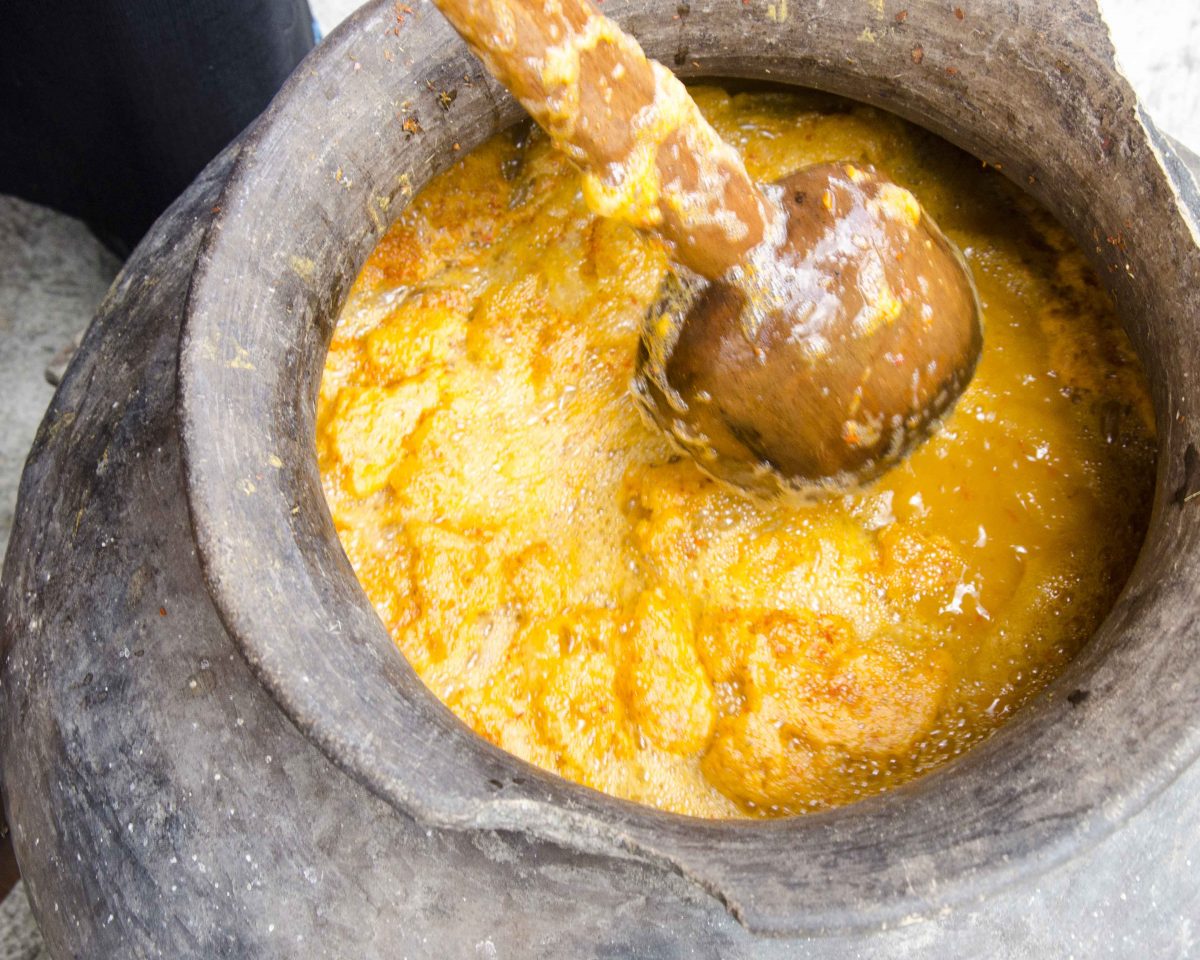
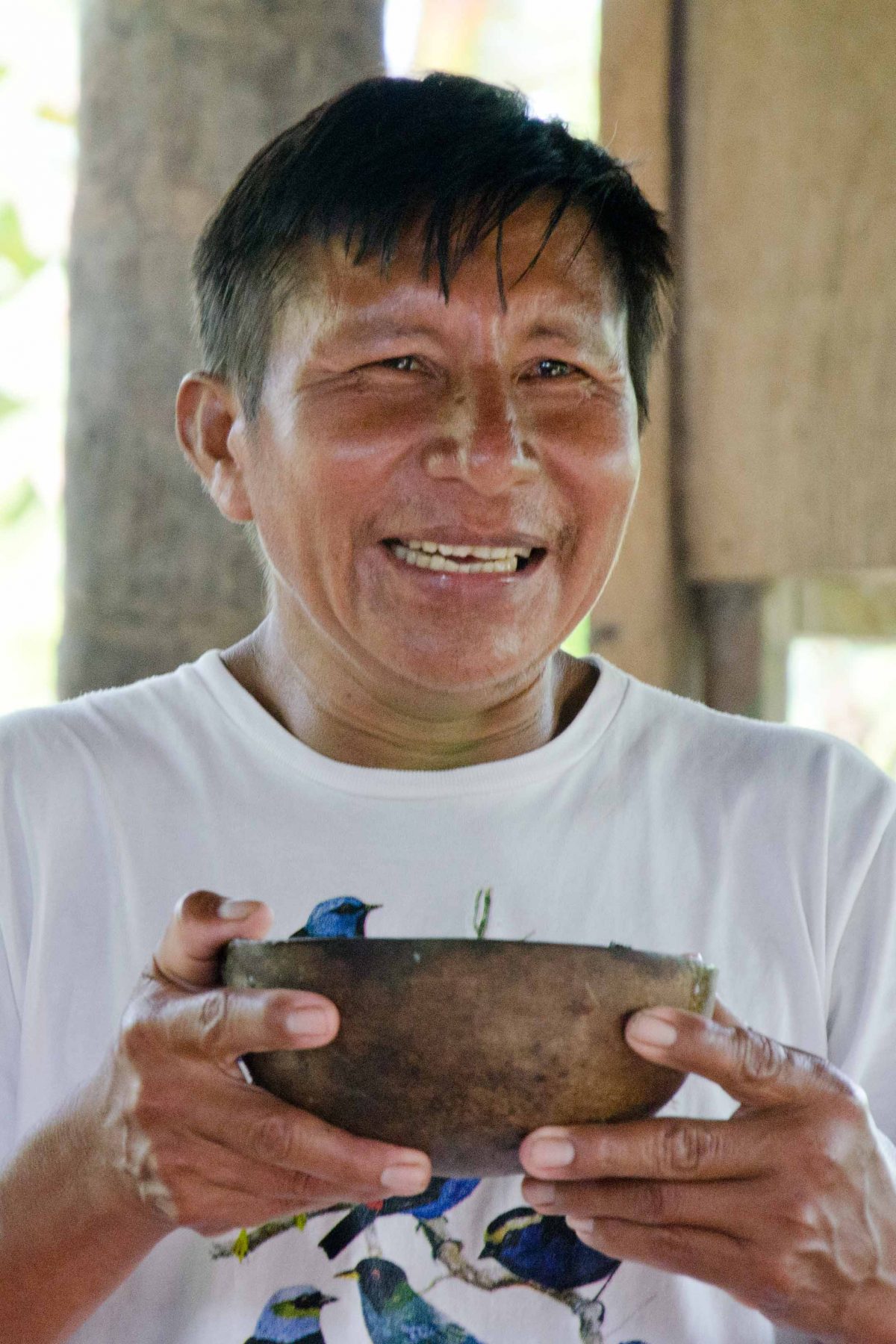

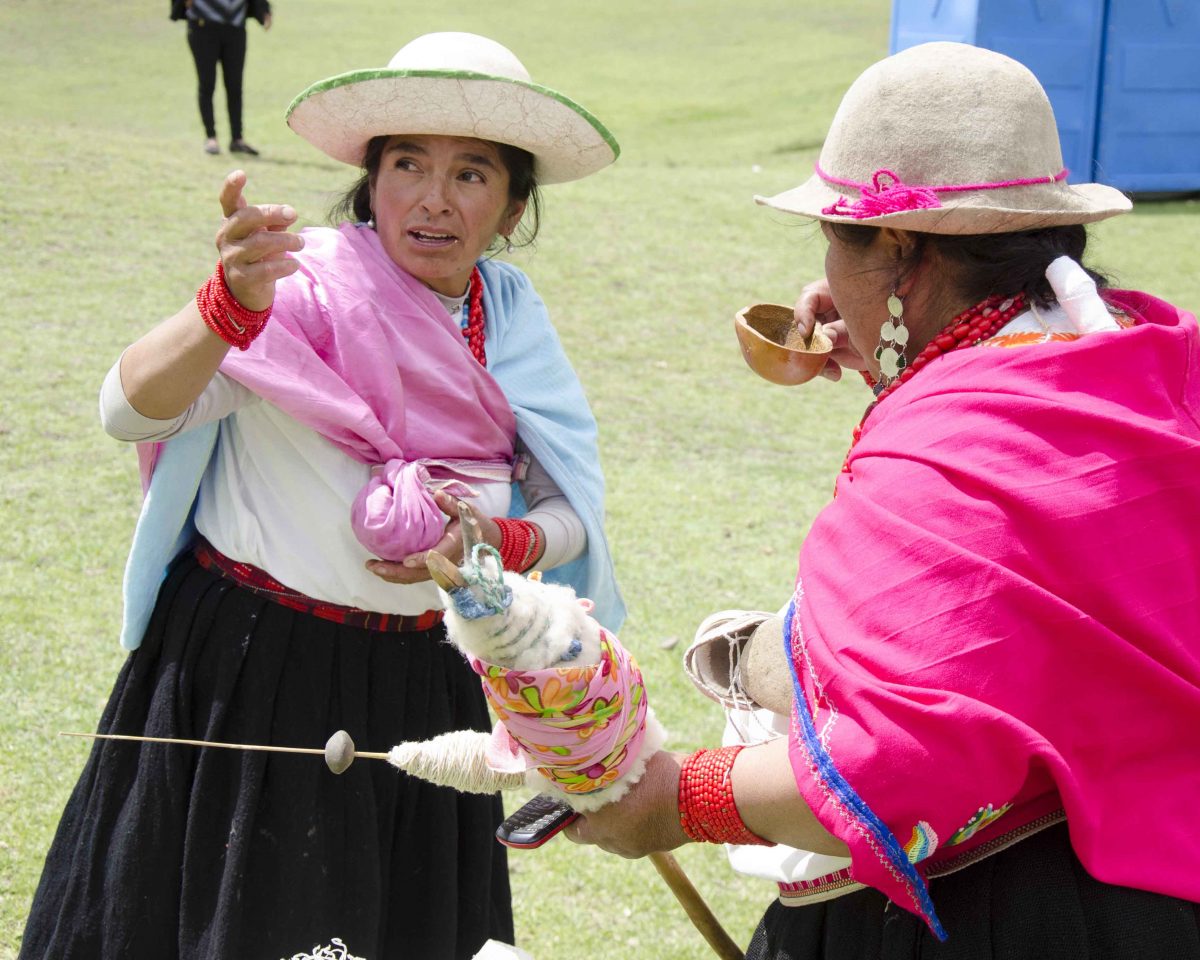

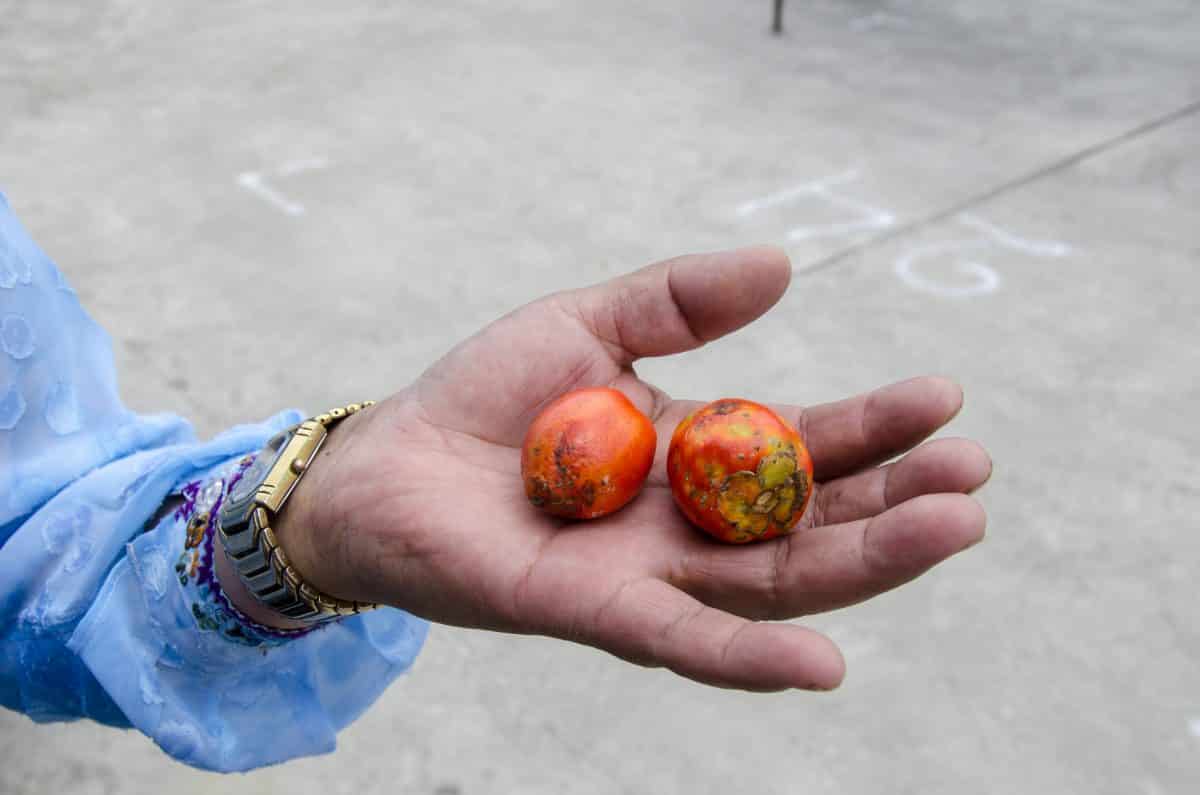
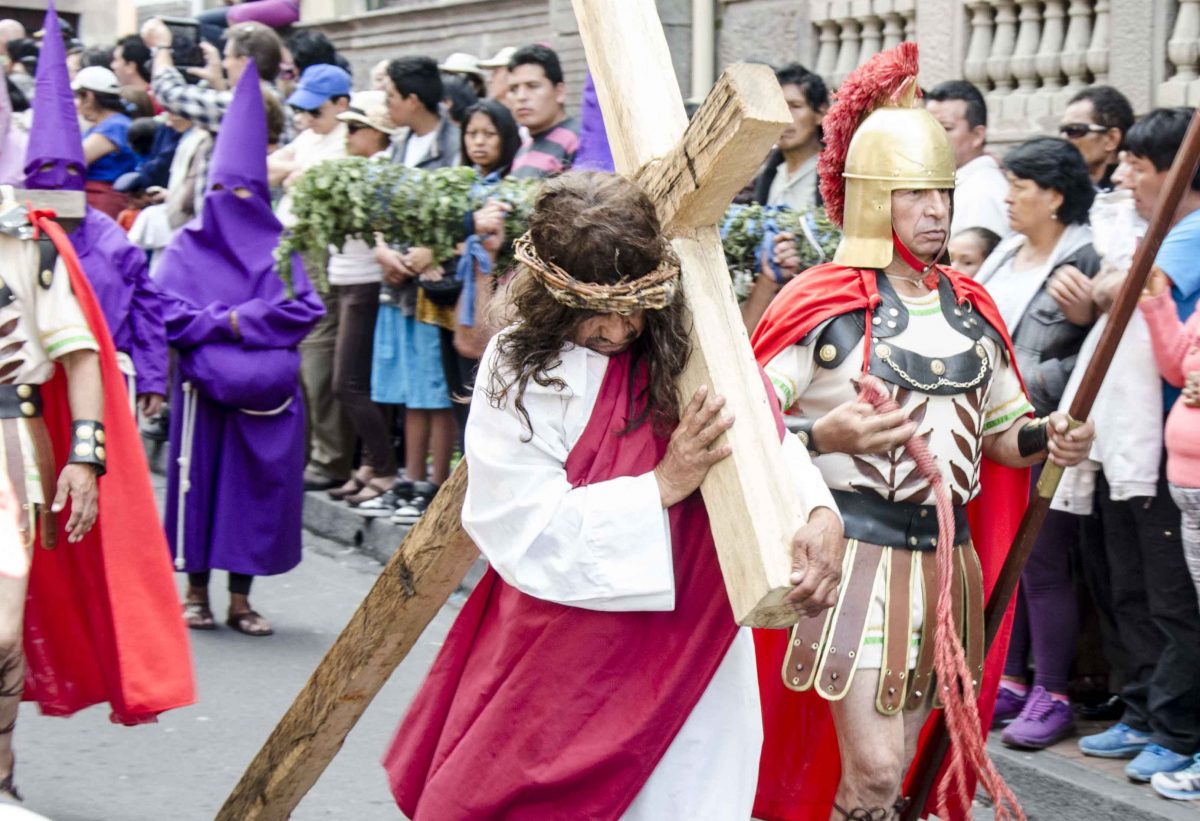
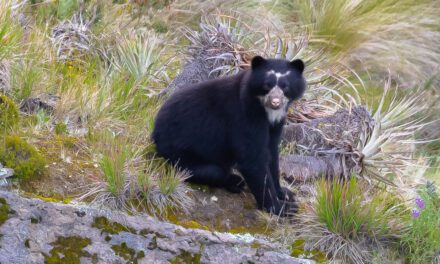

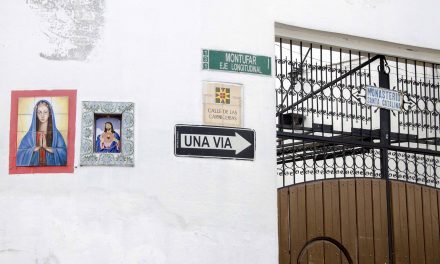

















Interesting, I’ve never heard of it before! Thanks for giving such detail. Question: is it alcohol? Or more like fermented similar to Kombucha? (Not the process just referring to another fermented drink that isn’t actually going to get you buzzed)
It contains alcohol. Wild yeasts eat the natural sugars and convert it to alcohol. That’s why the flavor is much stronger in an older ferment; the yeasts have had more time to work on the sugars. And for those reading this that don’t know about kombucha, it also contains alcohol though the amount will also depend on the age of the brew. Like chicha, a young ferment is unlikely to get you buzzed. For more info: http://www.culturesforhealth.com/kombucha-tea-frequently-asked-questions-faq.
This is so interesting! I had heard of chicha and indeed of the chew and spit method, but had no idea what actually went in it or how it was done. I have never tried it but there is nothing like a traditional beverage to experience a country so will definitely give it a taste once I finally make it to South America!
I’m glad you’re the kind of traveler willing to try new things… it’s the best way to get to know a new culture!
Hey Angela, I have enjoyed many of your well documented posts, from volcanos to roasted cuy to chicha de chonta. However, I have a small clarification to make, if I may; one of the Latin American countries you are referring to (upper left hand corner of South America), is ColOmbia, named after Cristoforo ColOmbo, the Italian navigator. In English, the name is ColUmbus, and thus for instance, British ColUmbia. The pronunciation is practically the same, but that “U” hurts our sensitive eyes, and since you are NOT an average North American, I figure you will welcome my humble contribution.
I very much appreciate the correction and despite knowing the correct spelling, I still made a mistake. I need a better proofreader in the house! Thank you so much and I will correct the mistake immediately. I am thankful to have such attentive readers 🙂